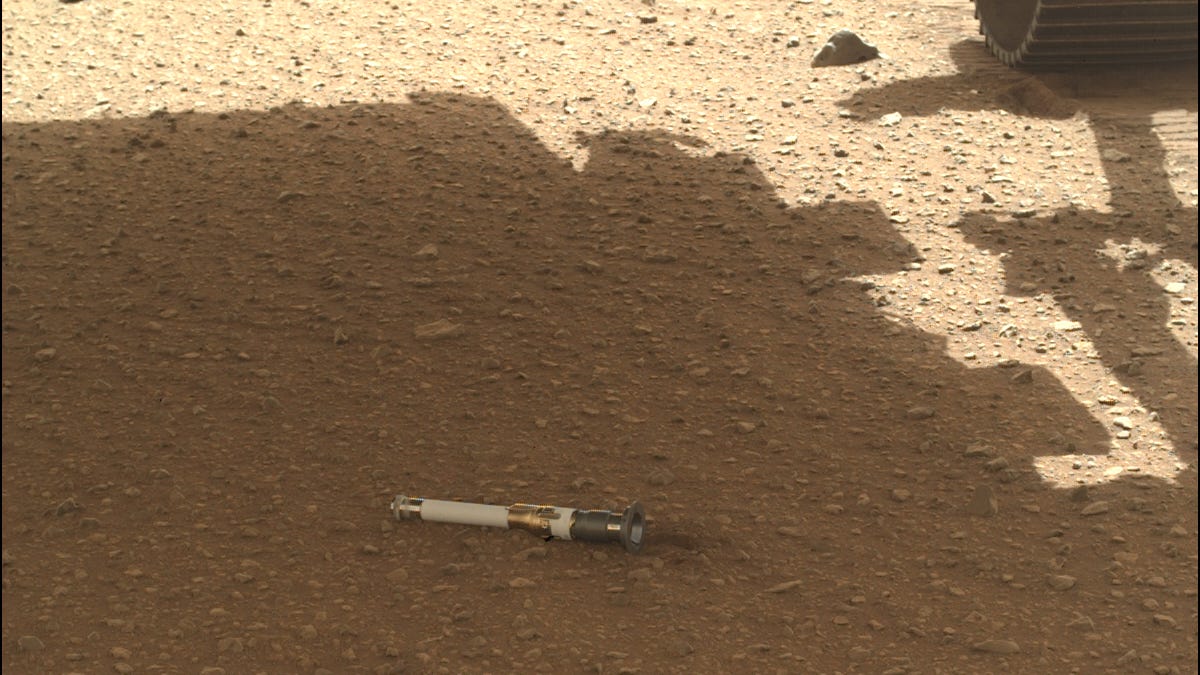NASA Mars Rover Just Dropped Its First Sample on the Red Planet
Perseverance rover is creating humanity's first sample depot on another planet.

The sample tube lies in the shadow of the Perseverance rover.
At first glance, you might think the image above is from a Star Wars film; an old lightsaber left behind on the surface of Tatooine or Mustafar. But that's no lightsaber, and the ground underneath is not from a galaxy far, far away. Nope, that's Mars.
NASA's Perseverance rover, currently roaming around an ancient lakebed known as Jezero Crater, has deposited the first sample on the surface of another planet, hoping that a yet-to-be-built spacecraft will come and collect the tubes in the coming decade. NASA had hinted Percy was about to begin building "humanity's first sample depot on another planet" in a blog post on Dec. 17 at a location known as "Three Forks."
A close-up of the lightsa- sorry, titanium tube.
The sample was collected on Jan. 31 and is informally known as "Malay." The sample itself is about the size of a piece of chalk and protected from the harsh Martian environment within the titanium tube. Perseverance held onto it all year, before dropping it about three feet to Mars' rocky ground.
"Seeing our first sample on the ground is a great capstone to our prime mission period," Rick Welch, the deputy project manager for Perseverance at NASA's Jet Propulsion Laboratory, said in a statement.
NASA and the European Space Agency are developing a Mars lander specifically designed to grab samples from the Perseverance rover's belly, place them in a rocket and blast them from Mars back to Earth. Such a mission would not return the samples to Earth until the early 2030s.
However, there are contingencies. If Perseverance can't get to the lander and deliver the samples, the backup plan is to nab samples it deposits in the depot with a pair of helicopters. Yes, helicopters. As Mars watchers know, helicopters work pretty well on the red planet. Over the coming weeks, Percy is expected to drop more samples before its prime mission period ends on Jan. 6, 2023.
"It's a nice alignment that, just as we're starting our cache, we're also closing this first chapter of the mission," Welch said.
Collecting samples will reveal more about Martian geology and climate and help search for signs that microbes once existed on the red planet.
NASA isn't the only would-be Mars sample-returner. Japan's space agency is hoping to grab samples from the Martian sphere, too. The MMX mission plans to land on Mars' potato-shaped moon, Phobos, and bring those samples back home before the end of the decade.

